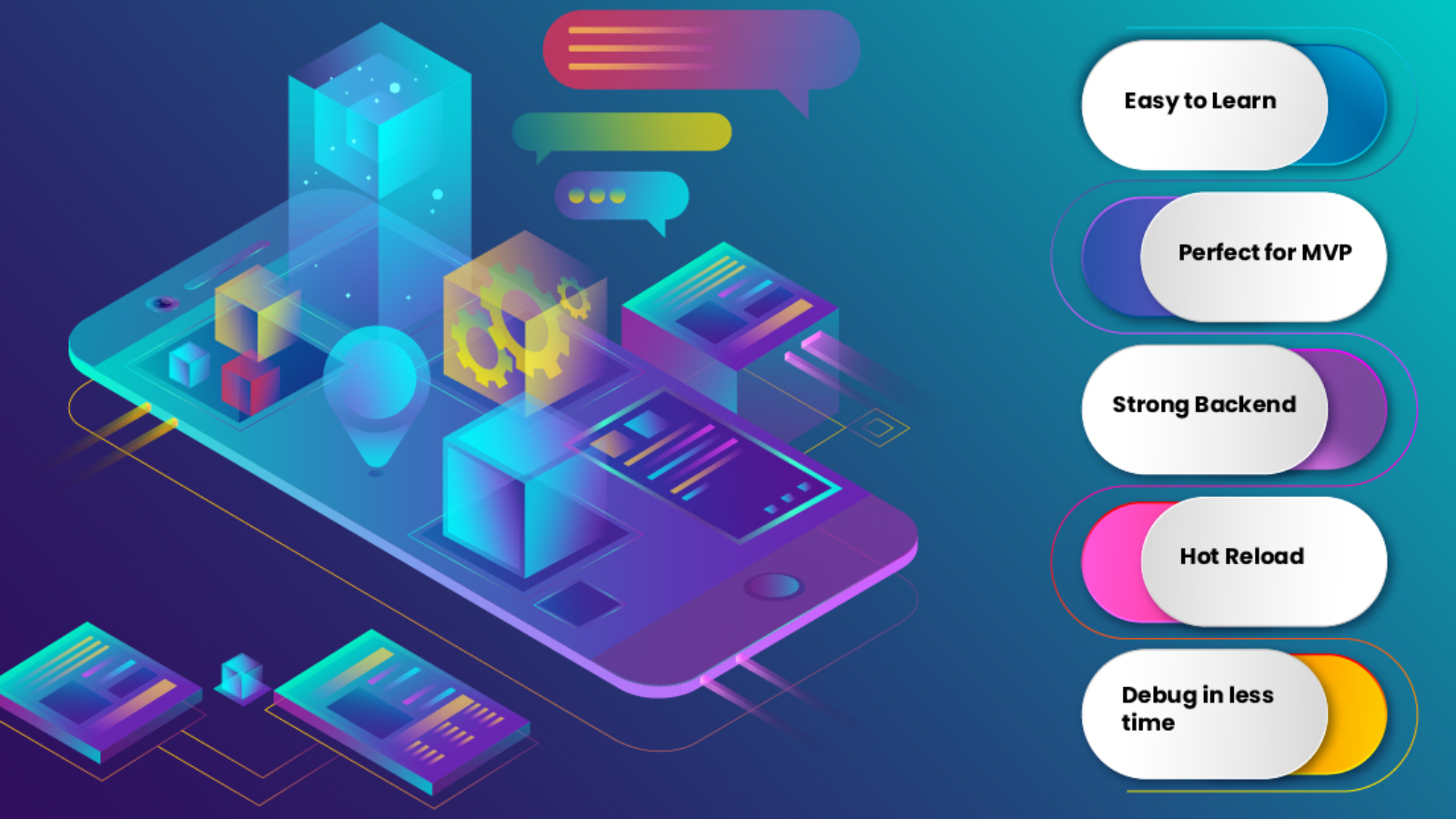Cross-platform development has revolutionized the software industry by allowing developers to build applications that work seamlessly across multiple platforms using a single codebase. This approach not only reduces development time and costs but also ensures consistency in user experience across different devices. In this detailed guide, we’ll explore various cross-platform development tools and frameworks, examining their features, advantages, and use cases.
1. Understanding Cross-Platform Development
1.1 What is Cross-Platform Development?
Cross-platform development refers to the process of creating software applications that can run on multiple operating systems (OS) or devices from a single codebase. This approach contrasts with native development, where separate codebases are written for each target platform.
1.2 Benefits of Cross-Platform Development
- Code Reusability: Write once, run everywhere. This reduces duplication of effort and maintenance costs.
- Consistent User Experience: Ensures a uniform look and feel across different platforms.
- Faster Time-to-Market: Accelerates development by leveraging a single codebase.
- Cost Efficiency: Lower development and maintenance costs due to reduced complexity.
2. Key Cross-Platform Development Tools and Frameworks
2.1 React Native
Overview: React Native, developed by Facebook, is one of the most popular cross-platform frameworks. It allows developers to build mobile apps using JavaScript and React, while rendering native components.
Features:
- Declarative UI: Build user interfaces with a declarative syntax using React components.
- Native Performance: Access native APIs and components for high performance.
- Hot Reloading: See changes in real-time without rebuilding the entire app.
- Community and Ecosystem: Large community support with a wide range of libraries and tools.
Advantages:
- Code Sharing: Share a significant amount of code between iOS and Android.
- Native Modules: Integrate with native code when needed for specific functionalities.
Disadvantages:
- Performance Overhead: Slight performance overhead compared to fully native apps.
- Native Dependencies: Requires knowledge of native development for certain integrations.
Use Cases:
- Social Media Apps: Facebook, Instagram, and WhatsApp use React Native.
- E-Commerce Apps: Shopify’s mobile app is built using React Native.
Getting Started:
- Install Node.js: Required for managing packages.
- Set Up React Native CLI:bashCopy code
npm install -g react-native-cli - Create a New Project:bashCopy code
react-native init MyProject - Run the App:bashCopy code
cd MyProject react-native run-android react-native run-ios
2.2 Flutter
Overview: Flutter, developed by Google, is a UI toolkit that enables developers to build natively compiled applications for mobile, web, and desktop from a single codebase. It uses the Dart programming language.
Features:
- Widget-Based Architecture: Build UIs using a rich set of pre-designed widgets.
- Hot Reload: Instant feedback on changes without losing the current state.
- High Performance: Directly compiles to native code for optimal performance.
- Customizable UI: Highly customizable widgets and themes.
Advantages:
- Unified Codebase: Share the same codebase across mobile, web, and desktop.
- Fast Development: Rapidly build and iterate on UIs.
Disadvantages:
- New Ecosystem: Still evolving compared to more mature frameworks.
- Limited Third-Party Libraries: Some libraries may not be as mature as those available for other frameworks.
Use Cases:
- Mobile Apps: Google Ads, Alibaba’s Xianyu app, and Reflectly use Flutter.
- Web and Desktop Apps: Flutter is expanding into web and desktop applications.
Getting Started:
- Install Flutter SDK: Download and install Flutter from Flutter’s official website.
- Set Up an Editor: Use VS Code or Android Studio with Flutter and Dart plugins.
- Create a New Project:bashCopy code
flutter create my_project - Run the App:bashCopy code
cd my_project flutter run
2.3 Xamarin
Overview: Xamarin, developed by Microsoft, enables developers to build cross-platform apps using C# and the .NET framework. It integrates with Visual Studio and provides access to native APIs.
Features:
- Single Language: Write code in C# and share it across platforms.
- Native Performance: Access native APIs and compile to native code.
- Integration with Visual Studio: Seamlessly integrate with Microsoft’s development environment.
Advantages:
- Strong Microsoft Ecosystem: Integrates well with other Microsoft products and services.
- Code Sharing: Significant code sharing between iOS, Android, and Windows.
Disadvantages:
- Learning Curve: Requires knowledge of C# and .NET.
- App Size: Xamarin apps can be larger due to the overhead of the Xamarin runtime.
Use Cases:
- Enterprise Apps: Many enterprise applications use Xamarin for its integration with the Microsoft ecosystem.
- Productivity Apps: Apps like Olo, Alaska Airlines, and The World Bank use Xamarin.
Getting Started:
- Install Visual Studio: Download and install Visual Studio with Xamarin components.
- Create a New Project: Use the Xamarin project template in Visual Studio.
- Build and Run: Use Visual Studio’s tools to build and run your app on different platforms.
2.4 Ionic
Overview: Ionic is a framework for building cross-platform mobile apps using web technologies like HTML, CSS, and JavaScript. It uses Angular, React, or Vue for building the app.
Features:
- Web Technologies: Build apps using familiar web technologies.
- UI Components: Provides a rich set of pre-designed UI components.
- Cross-Platform: Supports iOS, Android, and Progressive Web Apps (PWAs).
Advantages:
- Web Development Skills: Leverage existing web development skills.
- Extensive Library: Access to a large library of components and plugins.
Disadvantages:
- Performance: May not match the performance of fully native apps.
- WebView-Based: Uses WebView, which can impact performance and user experience.
Use Cases:
- Content-Based Apps: News apps, blogs, and informational apps.
- Business Apps: Internal tools and productivity apps.
Getting Started:
- Install Ionic CLI:bashCopy code
npm install -g @ionic/cli - Create a New Project:bashCopy code
ionic start myApp - Run the App:bashCopy code
cd myApp ionic serve
2.5 PhoneGap/Cordova
Overview: PhoneGap (now Apache Cordova) is a framework for building mobile apps using HTML, CSS, and JavaScript. It wraps web apps into native containers to access device features.
Features:
- Web Technologies: Build apps using web technologies.
- Plugins: Access native device features through a variety of plugins.
- Cross-Platform: Support for iOS, Android, and other platforms.
Advantages:
- Familiar Technologies: Utilize web development skills for mobile app development.
- Wide Plugin Support: Extensive collection of plugins to access device features.
Disadvantages:
- Performance: May not offer the same performance as native apps.
- Limited UI Customization: Less flexibility in customizing UI compared to native or hybrid frameworks.
Use Cases:
- Simple Apps: Applications with limited interaction with native features.
- Prototyping: Quickly prototype ideas using web technologies.
Getting Started:
- Install Node.js: Required for managing packages.
- Install Cordova CLI:bashCopy code
npm install -g cordova - Create a New Project:bashCopy code
cordova create myApp - Add Platforms and Plugins:bashCopy code
cd myApp cordova platform add android cordova plugin add cordova-plugin-camera - Run the App:bashCopy code
cordova run android
3. Comparing Cross-Platform Development Tools
3.1 Performance
- React Native: Generally offers near-native performance but may require native modules for complex tasks.
- Flutter: Provides high performance with its custom rendering engine and direct compilation to native code.
- Xamarin: Delivers native performance with full access to native APIs, but app size can be larger.
- Ionic: Performance may be lower due to reliance on WebView, but sufficient for many use cases.
- PhoneGap/Cordova: Performance can be a concern due to WebView usage, suitable for simpler apps.
3.2 Development Experience
- React Native: Offers a rich development experience with a large community and numerous libraries.
- Flutter: Provides a smooth development experience with hot reload and a rich set of widgets.
- Xamarin: Integrated with Visual Studio, offering a robust development environment for C# developers.
- Ionic: Utilizes web development skills, making it easy for web developers to transition to mobile app development.
- PhoneGap/Cordova: Suitable for web developers but may require workarounds for certain native functionalities.
3.3 Ecosystem and Community
- React Native: Large and active community with extensive libraries and third-party tools.
- Flutter: Rapidly growing community and ecosystem with increasing support and resources.
- Xamarin: Strong support from Microsoft and a growing community, especially in enterprise environments.
- Ionic: Established community and extensive plugin ecosystem.
- PhoneGap/Cordova: Legacy framework with a smaller but still active community.
4. Choosing the Right Framework
Selecting the right cross-platform development framework depends on various factors, including:
4.1 Project Requirements
- Complexity: For complex, high-performance apps, consider Flutter or React Native. For simpler apps, Ionic or PhoneGap might be sufficient.
- Platform Targets: Ensure the framework supports all target platforms (iOS, Android, Web, Desktop).
4.2 Team Expertise
- Skill Set: Choose a framework that aligns with your team’s expertise. For example, use React Native or Flutter if your team is familiar with JavaScript or Dart, respectively.
4.3 Development Speed and Cost
- Budget: Assess the total cost of development, including time and resources. Frameworks with larger ecosystems and community support can potentially reduce development time.
5. Future Trends in Cross-Platform Development
5.1 Growing Ecosystems
Cross-platform frameworks are continually evolving, with growing ecosystems and improved support for various platforms. Frameworks like Flutter are expanding into web and desktop development, broadening their applicability.
5.2 Enhanced Performance
Future developments may focus on improving performance and reducing the gap between native and cross-platform apps. Innovations in rendering engines and optimization techniques will likely play a significant role.
5.3 Integration with Emerging Technologies
Cross-platform frameworks will increasingly integrate with emerging technologies such as AI, AR/VR, and IoT, providing developers with advanced tools and capabilities.
Conclusion
Cross-platform development tools and frameworks offer powerful solutions for building applications that run seamlessly across multiple platforms. By understanding the features, advantages, and use cases of each framework, developers can make informed decisions that align with their project requirements and team expertise.
Whether you choose React Native, Flutter, Xamarin, Ionic, or PhoneGap/Cordova, the key is to leverage the strengths of each framework to deliver high-quality, consistent, and performant applications. As technology continues to evolve, staying informed about the latest trends and advancements will help you make the most of cross-platform development and drive innovation in your projects.

